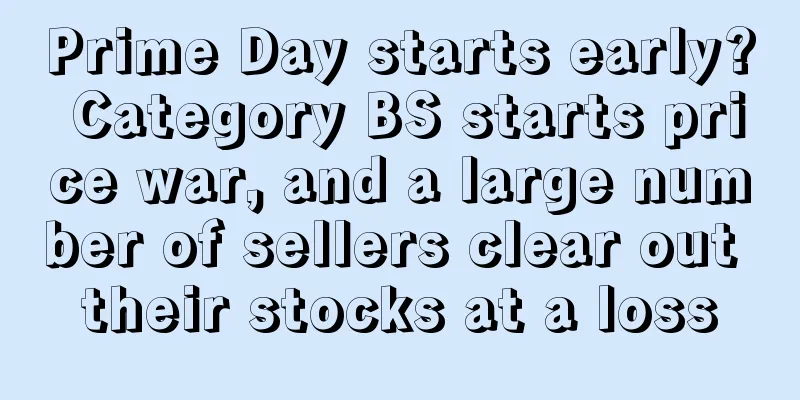How to Check the Average Return Rate of Amazon Categories

|
When conducting market research, understanding category conversion rates is crucial for evaluating advertising effectiveness and predicting product return costs. For example, in the apparel industry, the return rate can exceed 30%, making this data critical for calculating costs and developing strategies. However, unlike sales, return rate can be monitored in real time on a dashboard. It is more obscure behind the scenes, but it is also an extremely important indicator, both in terms of profit and listing. I have compiled a mind map, and I believe you will gain something after reading it. What is a normal return rate? Return rate = number of returns/sales volume*100% 🔴If the FBA return rate exceeds 10%, this listing may be banned by Amazon. 🔴A high refund rate will affect the Refund Rate, which has a certain impact on the ranking. 🔴If the return rate is too high and no rectification is made, your account may be blocked. When faced with the problem of low product conversion rate, many sellers may feel confused. However, without referring to the conversion rate data of categories or competitors, the analysis of their own product conversion rate and return rate will appear incomplete. Step 1: Log in to Amazon Seller Central and select [Product Selection Compass] in the [Growth] option. (Image source | Amazon backend) (Image source | Amazon backend) (Image source | Amazon backend) (Image source | Amazon backend) In addition to the return rate, we can also see the approximate return reasons, product performance, page views, search-to-purchase ratio, number of ASINs, advertising expenditures, number of sellers, number of new brands, and number of new ASINs for this category. Step 1: Open SellerSprite - Product - Select Market (Photo source | Seller Elf) (Photo source | Seller Elf) Then click [Filter Market] (Photo source | Seller Elf) Step 3: Scroll down the page to see the [ Average Return Rate for the Same Category ], which is the average return rate. (Photo source | Seller Elf) The return rate data of SellerSprite is actually derived from the product selection guide in the Amazon backend. The data of SellerSprite is for the last 6 months , while the data of Amazon backend is for 12 months by default . Therefore, there will be slight differences in the average return rates obtained by the two methods. The role of average return rate by category 1. It can measure your current return rate. If you don't know the average level, you don't have a reference and you don't know what state you are in now, good or bad. With this data, you can make a qualitative analysis and judgment. If the average score of a class is 80 and you get 60, then you are very bad and your parents may beat you. But if the average score of a class is 50 and you get 60, then you are excellent and your parents will reward you. Different references lead to different results. Second, the average return rate of a category can be used as one of the pricing references . The return rate of a category can help us estimate the after-sales costs more accurately and take these costs into account in product pricing to ensure reasonable pricing, prevent losses due to returns, and protect profit margins. How to calculate loss The goods were returned, but how much money was lost in this process? Will the commission still be deducted? What about delivery? Let's do the math below. First, some concepts: There are two possible outcomes when a product is returned: The first type: sellable. After the customer returns the product to the Amazon warehouse, after inspection, if the packaging and other aspects of the product are found to be intact, it is determined to be sellable again. The second type: unsalable. After the customer returns the product to the Amazon warehouse, after inspection, if the packaging is damaged or the product has obvious signs of use, it will be judged as unsalable. In this case, the product can only be removed or discarded. When the product is returned, only 20% of the commission is collected, and the rest is returned. FBA is still charged, and there is no FBA return fee when the product is returned. Note: The return cost of goods that cannot be sold after return includes: product cost, first-mile fee, FBA delivery fee, return management fee (20% sales commission), removal/disposal order fee, storage cost of each item sold, warehousing configuration fee, etc. Then the calculation formula is as follows: Available for sale: Loss on sale = product price x 15% x 20% + FBA fees Unsaleable loss = product price x 15% x 20% + FBA fee + product cost + first-leg freight + disposal cost For example: If a product cost = 20, first leg = 5, selling price = 15, FBA = 3.64, removal/disposal fee = 0.75, exchange rate 6.9 Loss on sale = 20 x 15% x 20% + 3.64 = 4.09 Unsaleable loss = 20 x 15% x 20% + 3.64 + (20+5)/6.9 + 0.75 = 8.01 If you find this conversion too troublesome, you can also use SellerSprite 's free tool [Profit Calculator] to calculate: It is worth noting that each return order will incur corresponding fees, increase costs and affect product profits. |
<<: Good news! Amazon has launched this new tool which is awesome!
>>: A large number of sellers have seen a sharp drop in orders? Don’t panic, here are two good news!
Recommend
What is Rufavor? Rufavor Review
Harbin Rufavor E-commerce Co., Ltd. (Rufavor) is a...
US fall back-to-school shopping season: Electronics spending will decrease, apparel spending will increase
Mulberry conducted a data survey on more than 1,10...
Back-to-school season may be cold! American retailers are panicking and engaging in a "price war"!
It is learned that according to foreign media repo...
Biden slams "sky-high" shipping costs! This important bill will be introduced to intervene
It is learned that according to foreign media repo...
What is Catch.com.au? Catch.com.au Review
Catch.com.au is Australia's largest daily deal...
Operations and stocking, management takes the blame? ! What algorithm can make the most reasonable use of funds?
Hello everyone, our company has its own factory, 1...
Overstock's US website officially changes its name to Bed Bath & Beyond
It is learned that on August 1, Overstock official...
The return period is extended! A loss of 70,000 RMB for a 100,000 RMB exchange! A large number of sellers are crying...
It’s the end of the year, but Amazon sellers are n...
What is Kred? Kred Review
Kred is a social influencer rating tool that influ...
A seller defrauded more than 8 million on Amazon and was sentenced to 18 months in prison!
It is learned that on August 29, the U.S. Attorney...
What is JD Worldwide? JD Worldwide Review
JD International is a brand under JD Group, mainly...
What is Letstango.com? Letstango.com Review
Letstango.com is an online shopping UAE shopping w...
Moss: Let’s talk about some of Amazon’s blue ocean traffic
I believe that many people's first reaction wh...
Breaking news! 21 countries’ postal services to China are suspended, and Russia has completely restricted entry!
As time goes by, although the overall epidemic si...
More than 220,000 bed rails on Amazon and other platforms have been recalled due to suffocation hazards! One death has been reported
It is learned that on November 14, the U.S. Consum...









